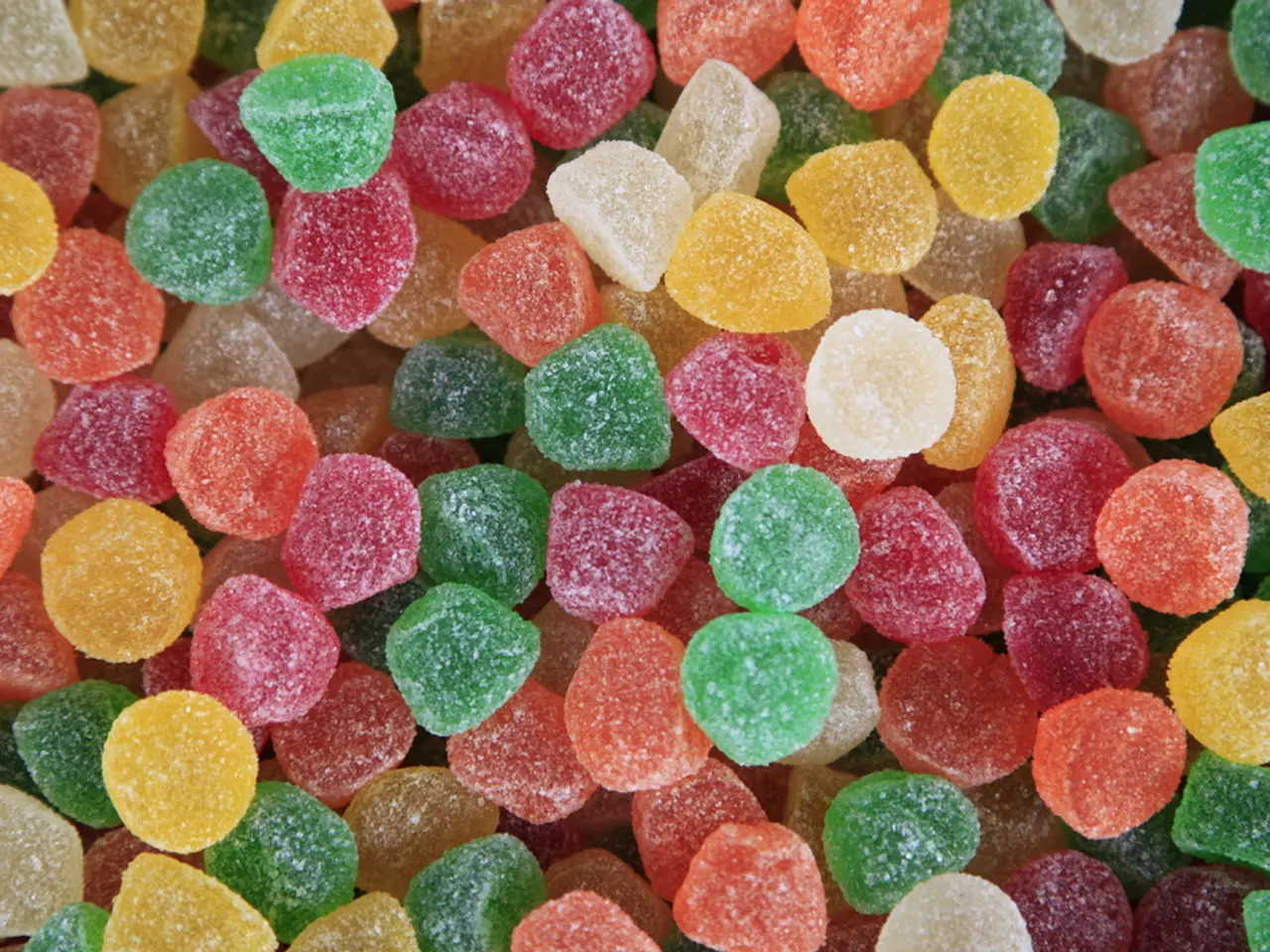Sugar Variants: Nutritional Differences and Cooking Comparisons (Regarding Brown Sugar vs. White Sugar)
==========================================================
When it comes to baking, the type of sugar you choose can greatly impact the texture and flavour of your final product. Here's a breakdown of the most common sugars used in baking and their ideal uses.
White Sugar
The most common and versatile type of white sugar is granulated white sugar. Known for its neutral taste, uniform medium-sized crystals, and ability to dissolve easily, it's ideal for most baking recipes including cakes, cookies, and sauces. For more delicate cakes and meringues, caster sugar (with finer granules) is a better choice, while powdered sugar (often with cornstarch) is used for icings, frostings, and dusting baked goods.
Brown Sugar
Brown sugar comes in two main types—light brown sugar and dark brown sugar—both are granulated sugar with molasses added back. Light brown sugar has less molasses, giving a milder caramel flavor and is great for cookies and oatmeal for subtle sweetness and moisture. Dark brown sugar contains more molasses, offering a richer, deeper flavor suited for recipes like gingerbread, barbecue sauces, or richer desserts.
Nutritious Alternatives
For those seeking healthier alternatives, several natural sweeteners provide flavour with additional nutrients or lower glycemic impact. Jaggery, a traditional unrefined sweetener made from sugarcane or palm sap, retains minerals like iron and calcium. Agave syrup and maple syrup are natural liquid sweeteners with some beneficial minerals and antioxidants. Other alternatives like honey, coconut sugar, and date syrup also bring flavors and nutrients, but consideration for their sugar content and recipe impact is important.
In summary, use granulated white sugar for general baking where neutral sweetness and texture are required. Use light or dark brown sugar to add moisture, depth, and caramel notes, adjusting based on recipe richness. Consider natural alternatives like jaggery, agave, and maple syrup for added nutrients and distinct flavours, though they may behave differently in recipes and often require adjustments.
This guidance is supported by recent sources explaining sugar types, their properties, and alternatives in baking and cooking contexts. It's important to remember that sugar, while providing sweetness, is not a nutrient-dense food and is often referred to as "empty calories." Eating too much added sugar can increase a person's risk of potentially serious health conditions such as excess weight, obesity, type 2 diabetes, and heart disease. The American Heart Association recommends that people limit added sugars to 10% of their daily calories to help avoid excess weight and reduce the risk of chronic diseases.
- The science of cooking reveals that various types of sugars substantially influence the flavor and texture of baked goods, making the selection of an appropriate sugar essential.
- Nutrition plays a significant role in lifestyle choices, as health-and-wellness enthusiasts often seek healthier alternatives for their baking recipes, incorporating natural sweeteners like jaggery, agave, and maple syrup.
- In fitness-and-exercise, maintaining a balanced diet is crucial, and understanding the glycemic impact of different sugars in recipes can help individuals make informed decisions about their food-and-drink intake.
- With recipes for baked goods like cakes, cookies, and meringues, granulated white sugar offers a versatile and neutral sweetening option, while brown sugar adds moisture and a caramel flavor.
- When embracing a lifestyle focused on food-and-drink and cooking, it's essential to recognize that while sugars contribute to the desired sweetness, they are not nutrient-dense foods and consuming too much can lead to health risks like obesity and type 2 diabetes, as suggested by the American Heart Association.




